#ruby-throated hummingbird migration
Text

Look closely for the tiny flying insects—this Ruby-throated Hummingbird is snacking on them! At sunrise in Brooklyn Bridge Park, Pier 1.
#birds#birding#urban birding#nuts_about_birds#birdstagram#patch birding#nature blogger#nyc nature#brooklyn#brooklyn bridge park#nyc#nature#migration#hummingbird#ruby throated hummingbird
95 notes
·
View notes
Photo


PSA: it may be getting colder but there are still Ruby-throated Hummingbirds moving through! Keep your feeders up and filled until the end of the month-- by then nearly all of them will have moved through. Keeping your feeders up will not prevent hummingbirds from migrating and if anything will help young birds, birds disrupted by storms, and stragglers make their way to the tropics.
586 notes
·
View notes
Text
Best Bird Pictures of October '22--Part 1
Best Bird Pictures of October ’22–Part 1
So many good pictures this month, I finally decided to post in more than one part. These pictures serve as a personal journal for me since I have been very unorganized with keeping up with my pictures. Blogging on a regular basis helps me to remember which birds I saw in different parts of the year as I learn more about birds–how to identify them and their habits.
Fall is a fun time of year to…

View On WordPress
#belted kingfisher#bird migrations#birding#Birdwatching#black and white warbler#black-throated blue warbler#brown thrasher#cape may warbler#cedar waxwing#downy woodpecker#great egret#migrating birds#Northern Cardinal#ruby-throated hummingbird
0 notes
Text
It is illegal and a fineable offense to feed the wildlife while camping.
But we definitely-accidentally spilled some millet and sunflower seeds onto an upturned frisbee at our campsite.
And the frisbee’s first visitor, about an hour later, wasn't a ground-feeder like a sparrow or even a chipmunk, but a Ruby-throated Hummingbird.

#birds#camping#summer birds 2022#spring bird migration 2022#Ruby-throated hummingbird#bird sightings#don't feed the wildlife
0 notes
Text
Mid-May Birding
Every day, new birds are arriving – it’s a great time for birding. Yesterday, I drove into a parking spot at Ginger’s play group and rolled down the window to get this hummer.
This Yellow-bellied Sapsucker and his mate are driving our neighbors crazy with their constant drilling on the sheet metal shed roof.
Canada Geese are raising youngsters all along the river.
One of the delightful new…
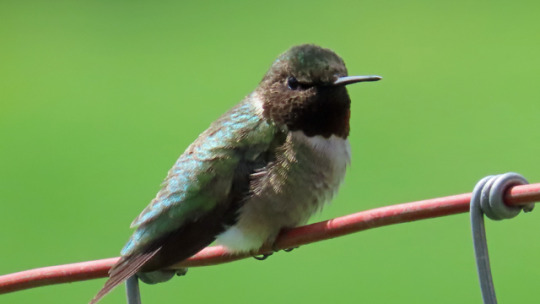
View On WordPress
#birding with ginger#Canada Geese#county bird#migration#Ruby-throated Hummingbirds#Sapsucker#Vermont Birding#Warbling Vireo#Washington County
0 notes
Text
ok ok. one last plant.
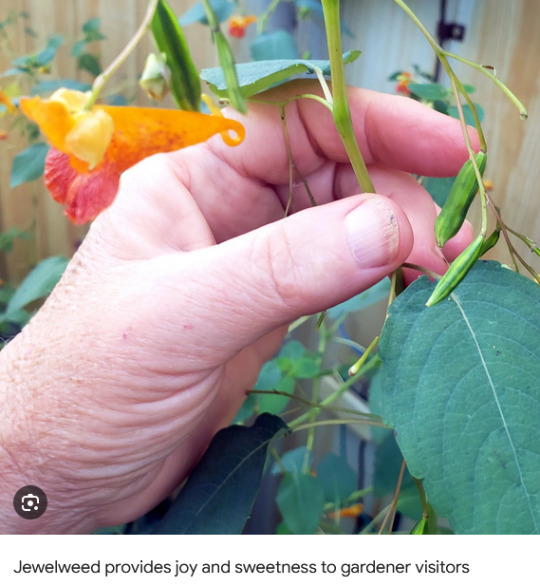
THAT'S RIGHT BITCH!!!!!
jewelweed is another north american native that's one of my all-time favorites. it's such a fascinating and good plant in so many ways. a total gem.
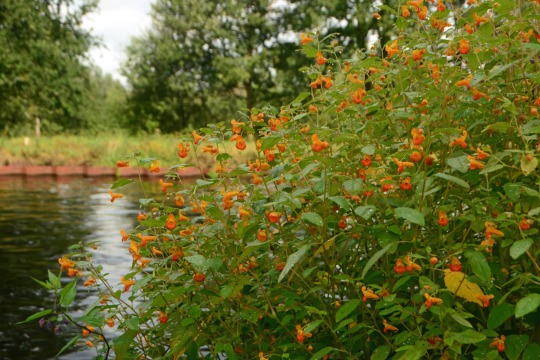

the flowers are cute and i like that it has a little tail.
the leaves are cool because they're completely waterproof. if you stick them underwater, they get all silvery and shiny, and when you pull them back up again, the water just rolls right off. it's very pretty.
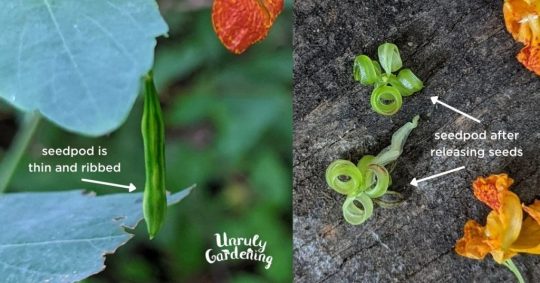
they also produce seed pods that are SO fun. if you touch them, they burst open and scatter the seeds around! it's really fun to go around and hunt for the pods and watch them pop.
also, they're a critical food source for ruby-throated hummingbirds! they bloom late, around august/september, which is around the time the hummingbirds start migrating. the nectar is crazy rich in sugar & nutrients that they require for their journey.
basically: It's a cool plant! i like seeing it a lot! it's cool!!!
16 notes
·
View notes
Text

Ruby
This is a female ruby throated hummingbird (Archilochus colubris). I think this is the last photo that I took of one of these this year. I'm pretty sure they are gone now. I might have been able to get them to stay a bit longer had I maintained their feeders as I usually do. These little birds cross the Gulf of Mexico non-stop in about 20 hours. You might think that the flock, but no, they migrate on their own.
If you're interested, here's a link to Bird Facts that talks about their migration:
#photo#photography#photographer#photographylovers#bird#birdwatching#birdphotography#birds#birdsphotography#birds of north america#birdlovers#birds nature#birdingphotography#ruby throated hummingbird#backyard birds#bird photography#bird watching#birding#birbs
19 notes
·
View notes
Note
Any pressing opinions on Crows and/or Ruby Throated Hummingbirds?
This is also bearing in mind that I'm talking about the true birds that were once living not the government drones that have replaced them. That of course only applies to the U.S. and parts of North and South America where birds native to the U.S. used to migrate to.
If you would like to read more about birds and the cause that is trying to spread awesomeness to their replacement with drones here is a link: https://birdsarentreal.com/pages/about
Thank you for your time.
(PSA because sometimes people take that seriously no I don’t think the U.S. government killed all the birds to spy on the citizens)
Crows and Hummingbirds are so cool; I’m particularly fond of crows!
Hummingbirds have such exotic colors I’m always a little surprised to see one where I live- which is a relatively boring location
#lol thanks for the ask my friend#ao3 shenanigans ask#birds aren’t real#not fanfiction#not fanfic#crows#hummingbirds
9 notes
·
View notes
Text
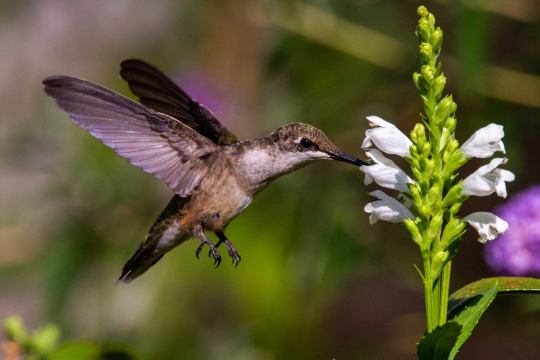

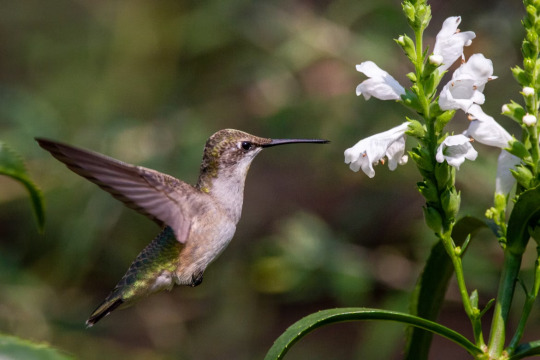
Ruby-throated Hummingbird getting nectar from the Obedient Plant - Backyard, Cordova, Tennessee, USA
Joshua J. Cotten
Scientific name: Archilochus colubris
Mass: 0.11 oz (Adult)
Conservation status: Least Concern (Population increasing)
Life expectancy: 3 - 5 years
Clade: Strisores
Class: Aves
Domain: Eukaryota
The ruby-throated hummingbird is a species of hummingbird that generally spends the winter in Central America, Mexico, and Florida, and migrates to Canada and other parts of Eastern North America for the summer to breed.
#Backyard#Cordova#Tennessee#USA#TNWildlife#Wildlife#Birds#Bird#US#United States of America#United States#North America#Hummingbird#Ruby-throated Hummingbird#Ruby throated hummingbird#Archilochus colubris#Strisores#Aves#Eukaryota#Obedient Plant
5 notes
·
View notes
Text
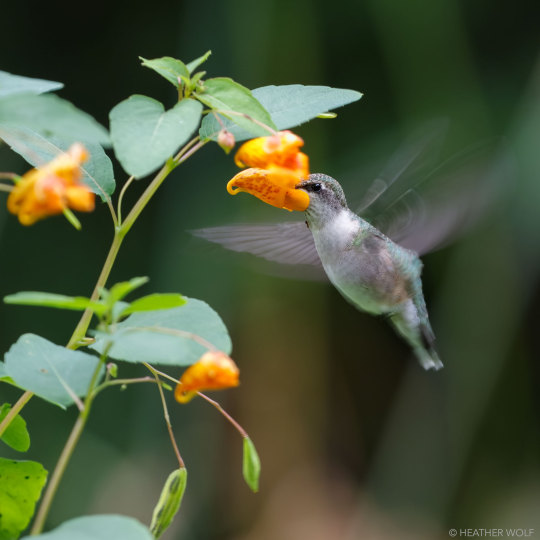
Ruby-throated Hummingbird visiting its jewelweed nectar bar!
Brooklyn Bridge Park
Pier 1 Long Pond
#birds#birding#urban birding#nuts_about_birds#birdstagram#patch birding#nature blogger#nyc nature#brooklyn#brooklyn bridge park#nyc#nature#migration#hummingbird#colibrí#ruby-throated hummingbird
131 notes
·
View notes
Photo
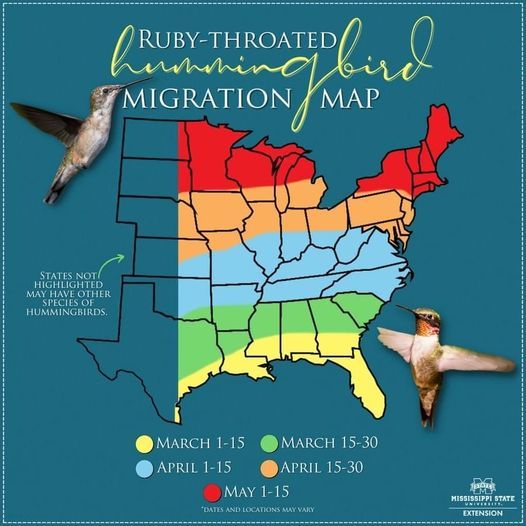
Ruby-throated Hummingbird Spring Migration Map for the Eastern U.S.
#migration#migrants#bird#birds#birdwatching#ornithology#science#animals#nature#hummingbird#pollinators#save the pollinators
34 notes
·
View notes
Text
Sure, here are some of the greatest animal migrations in the world, along with some details about each one:
1. Wildebeest Migration: Every year, over a million wildebeest migrate across the Serengeti plains of Tanzania and Kenya in search of fresh grazing lands. This migration is considered one of the largest and most dramatic wildlife events on Earth.
2. Monarch Butterfly Migration: Every fall, millions of monarch butterflies travel up to 3,000 miles from Canada and the United States to central Mexico, where they spend the winter in the oyamel fir forests.
3. Caribou Migration: Caribou, also known as reindeer, undertake one of the longest migrations of any land animal, traveling up to 3,000 miles across the Arctic tundra each year in search of food and breeding grounds.
4. Humpback Whale Migration: Humpback whales migrate up to 16,000 miles each year, from their breeding grounds in warm tropical waters to their feeding grounds in cold polar waters.
5. Arctic Tern Migration: The Arctic tern holds the record for the longest migration of any bird, traveling up to 44,000 miles each year from its breeding grounds in the Arctic to its wintering grounds in the Antarctic.
6. Pacific Salmon Migration: Pacific salmon migrate thousands of miles from the ocean to their freshwater spawning grounds each year, facing numerous obstacles such as waterfalls and predators along the way.
7. Gray Whale Migration: Gray whales make one of the longest migrations of any mammal, traveling up to 12,000 miles each year from their feeding grounds in the Arctic to their breeding grounds in Baja California, Mexico.
8. Leatherback Turtle Migration: Leatherback turtles travel up to 10,000 miles each year from their nesting beaches in the tropics to their feeding grounds in cold waters.
9. Bar-headed Goose Migration: Bar-headed geese are known for their high-altitude migration, flying over the Himalayas at altitudes of up to 29,000 feet as they travel from their breeding grounds in Mongolia to their wintering grounds in India.
10. Wildebeest Migration: Every year, over a million wildebeest migrate across the Serengeti plains of Tanzania and Kenya in search of fresh grazing lands. This migration is considered one of the largest and most dramatic wildlife events on Earth.
11. Sardine Run: The Sardine Run is an annual migration of sardines along the coast of South Africa, attracting predators such as dolphins, sharks, and birds.
12. Red Crab Migration: Every year, millions of red crabs migrate across Christmas Island in the Indian Ocean, moving from the forests to the coast to breed.
13. Snow Goose Migration: Snow geese migrate in huge flocks of up to 100,000 birds, traveling from their breeding grounds in the Arctic to their wintering grounds in southern North America.
14. Elephant Seal Migration: Elephant seals travel up to 13,000 miles each year in search of food, traveling from their breeding grounds in Antarctica to their feeding grounds in the southern hemisphere.
15. Arctic Fox Migration: Arctic foxes migrate long distances across the Arctic tundra each year, following the migrations of lemmings and other prey animals.
16. Blue Whale Migration: Blue whales travel up to 10,000 miles each year from their feeding grounds in the polar regions to their breeding grounds in warmer waters.
17. Wildebeest Migration: Every year, over a million wildebeest migrate across the Serengeti plains of Tanzania and Kenya in search of fresh grazing lands. This migration is considered one of the largest and most dramatic wildlife events on Earth.
18. Ruby-throated Hummingbird Migration: Ruby-throated hummingbirds migrate up to 3,000 miles each year from their breeding grounds in eastern North America to their wintering grounds in Central America.
19. Golden Jellyfish Migration: Every year, millions of golden jellyfish migrate across Jellyfish Lake in Palau, following the sun's movement to maximize their exposure to sunlight.
20. Zebra Migration: Zebras migrate across the African savannah each year, following the rains to find fresh grazing lands and water sources.

2 notes
·
View notes
Text
September 2022: Sunday/Monday Combo Post
Seen while walking Sunday:
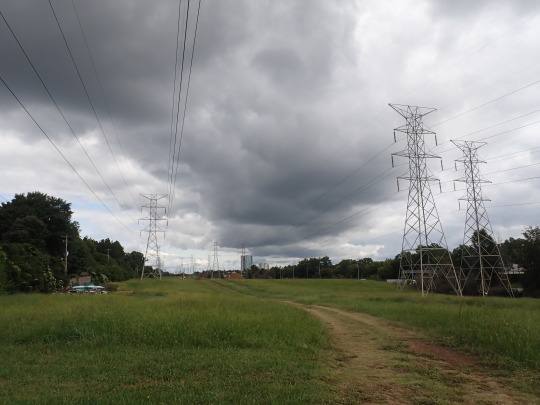
What can I say? This is America:

This fungus looks like a dollop of half-melted ice cream:

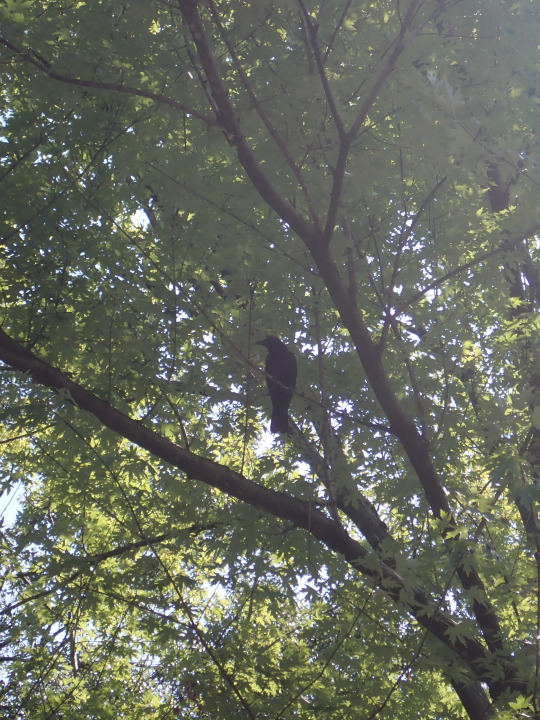
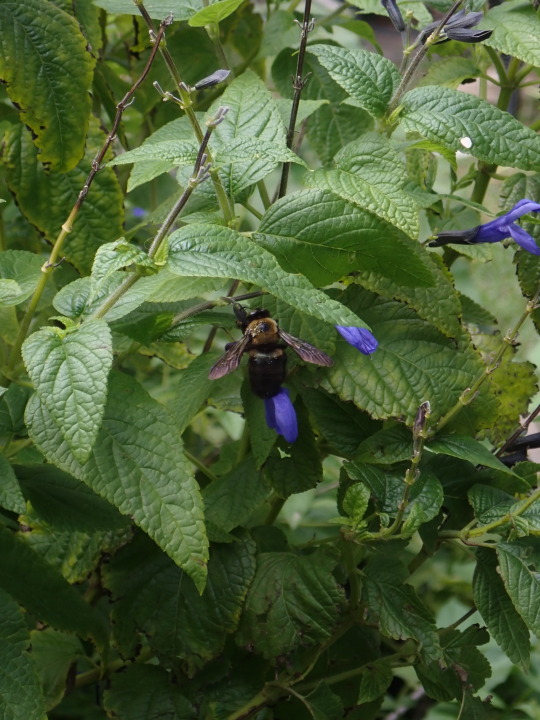
Sunday’s backyard garden harvest:
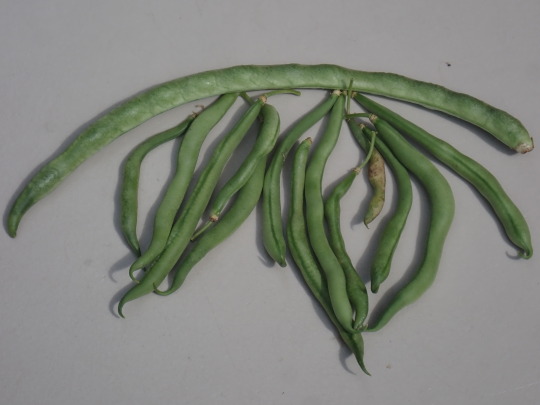


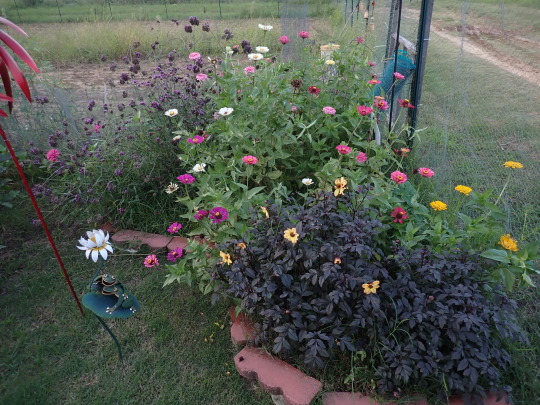
There is a pile at the community garden for garden trash. It is a great place to get extra material for our compost bin or, in this case, collect seeds. That is one head worth of sunflower seeds:
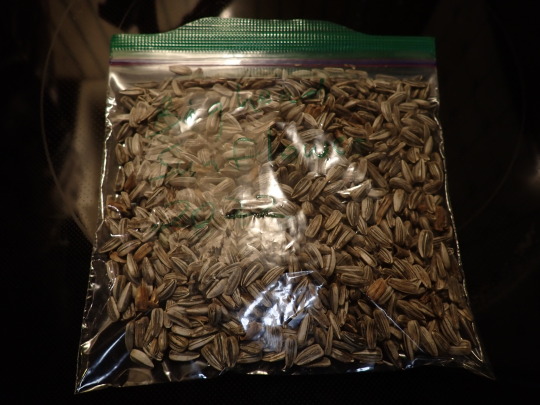
Sunday’s Plot 420 harvest:
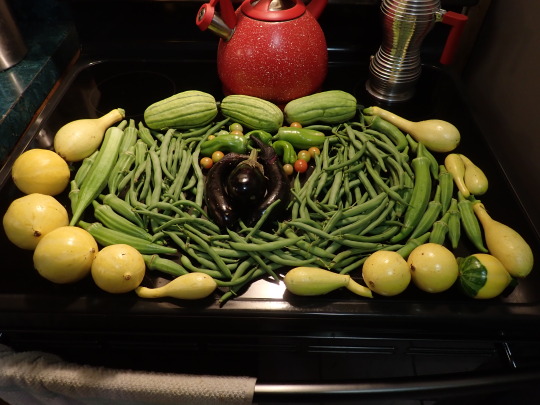
Monday’s backyard garden harvest:

Downy woodpecker enjoying some suet cake. You might notice the lid on the bird feeder in the background is askew. That’s because of squirrels:
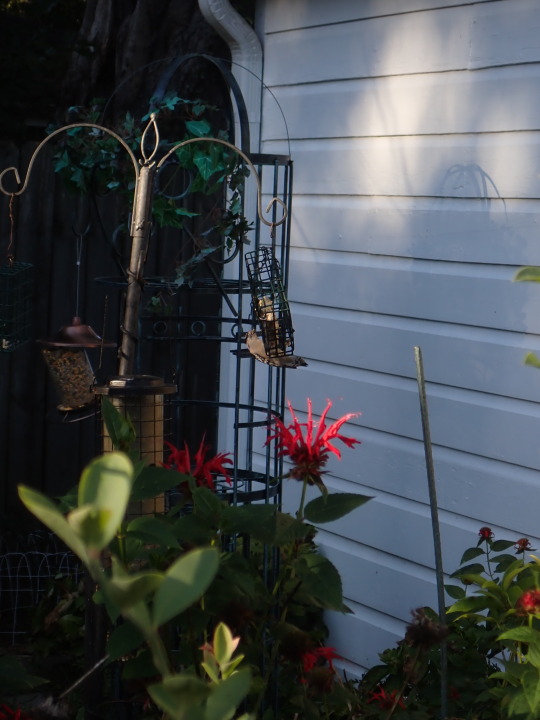
Specifically, this squirrel:
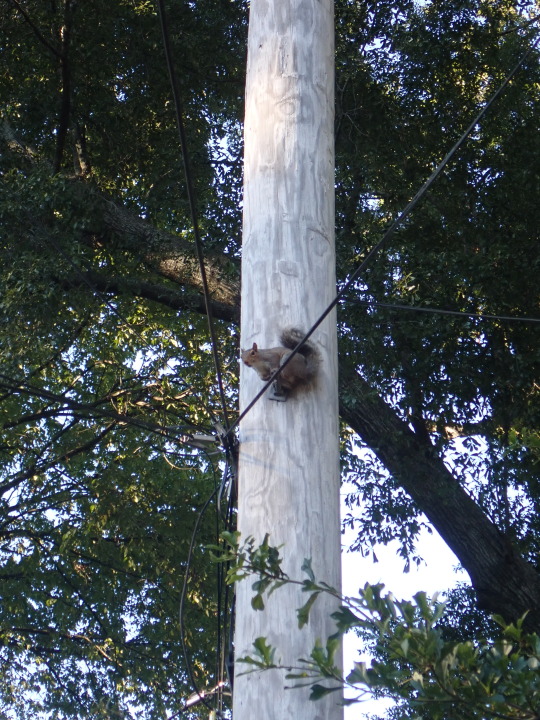
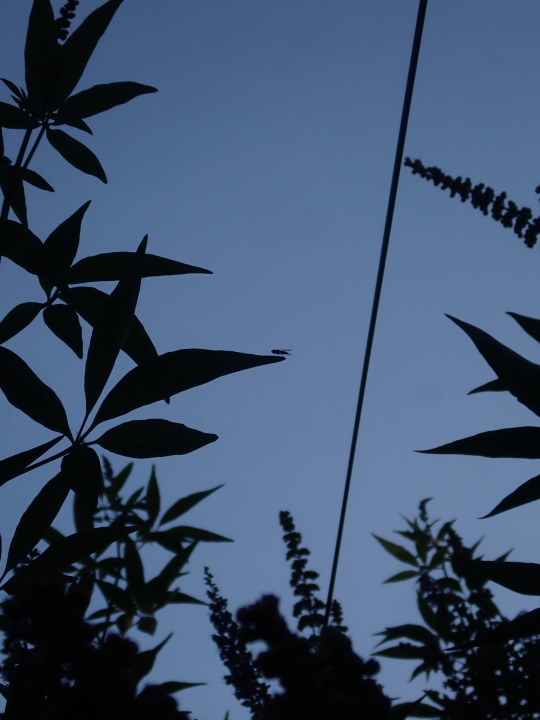
Yes, the ruby-throated hummingbird migration is in full swing so expect lots of out of focus and barely in frame hummingbird photos. For instance, if you can spot the hummingbird in this photo, your skills of observation & ability to stare at shit on the Internet are Kung Fu master level:
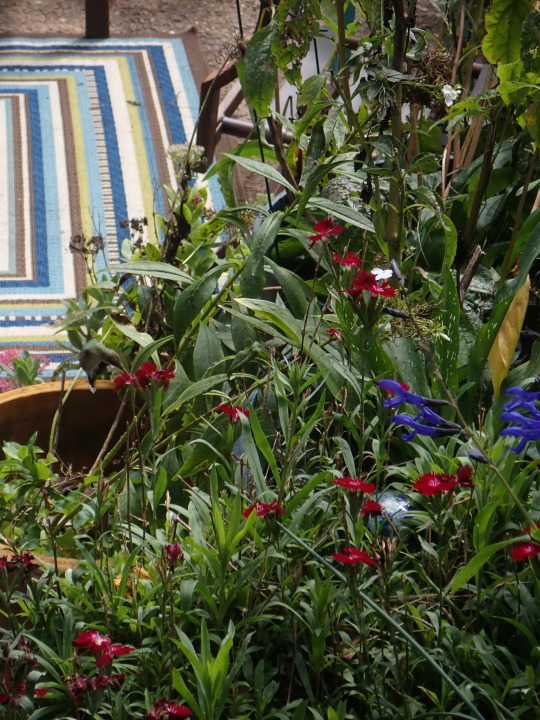

They’re a little blurry but these two spent a lot of time arguing about who had temporary ownership of the feeders & flowers in our backyard:
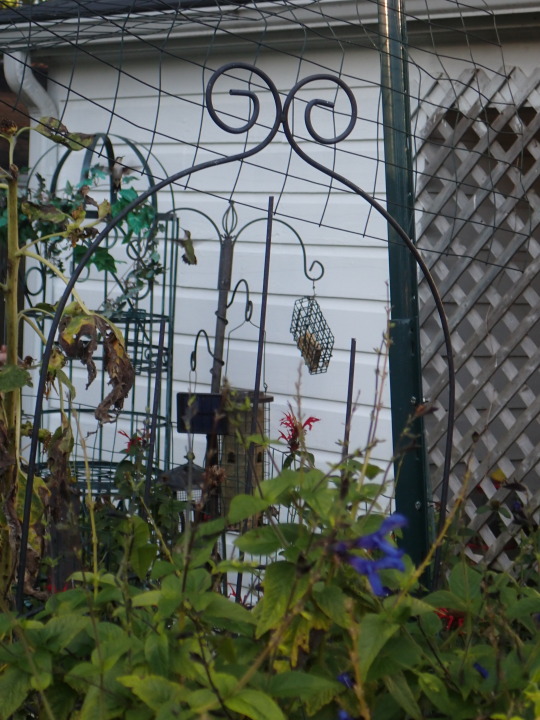
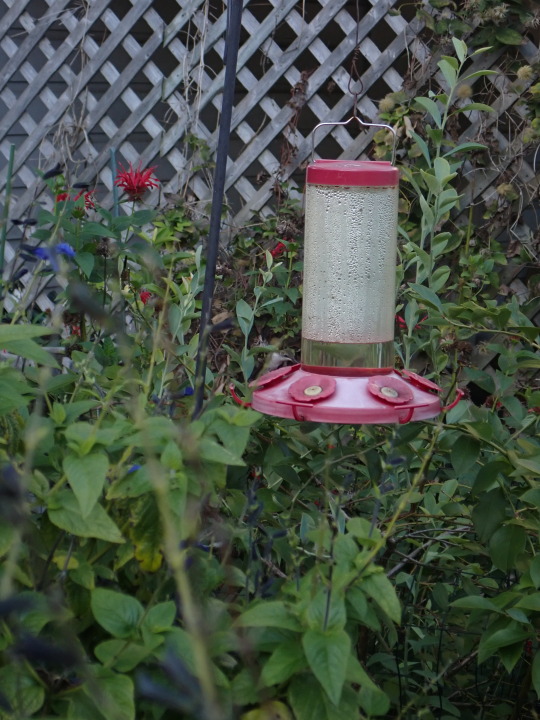
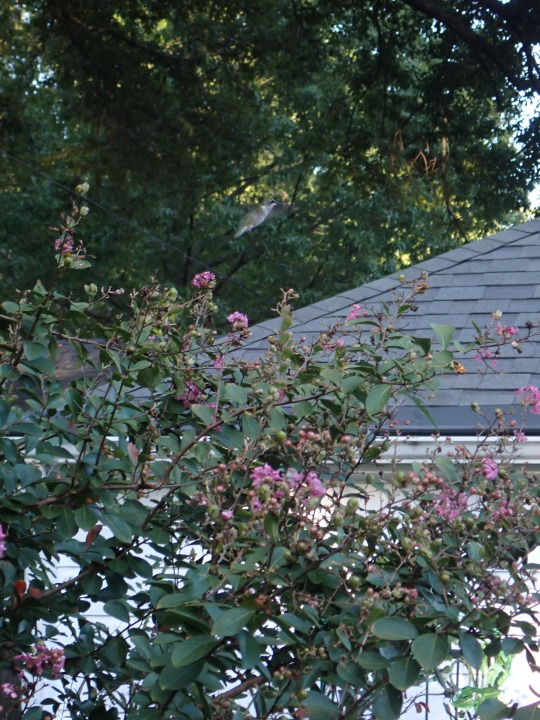
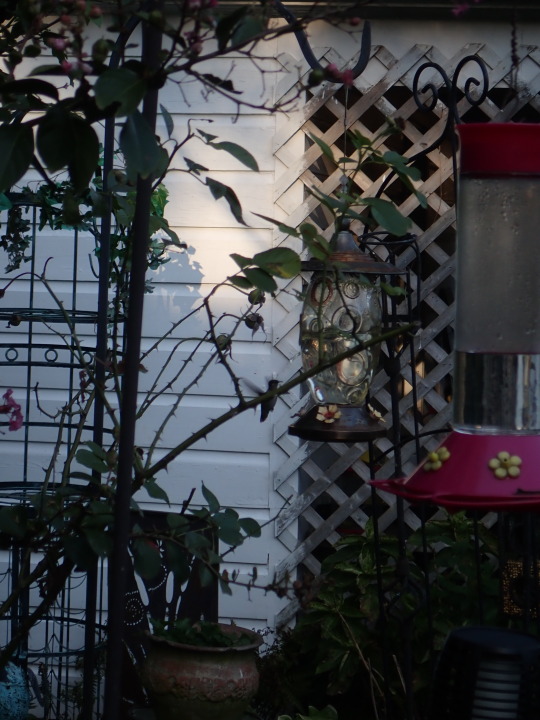
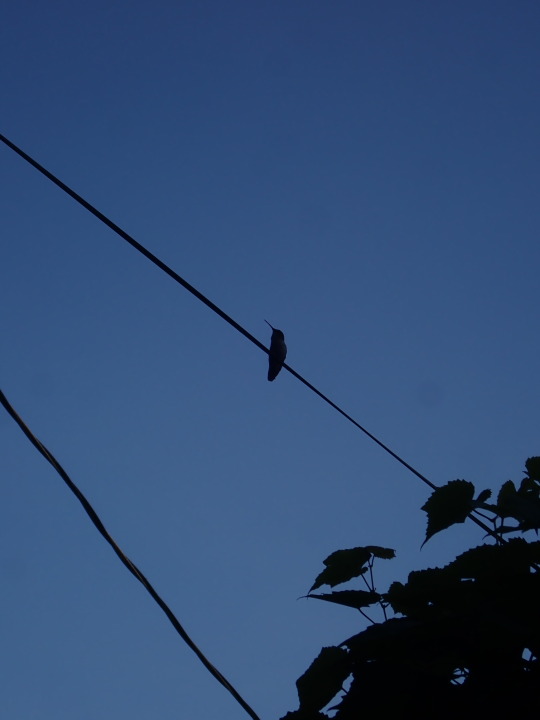
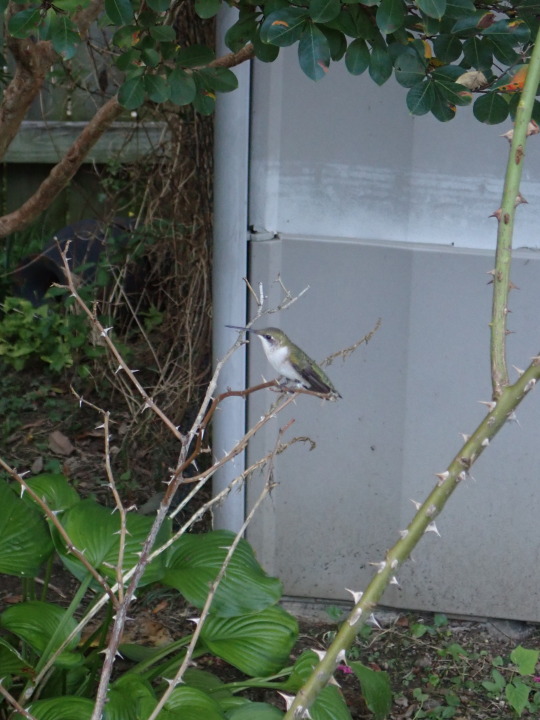
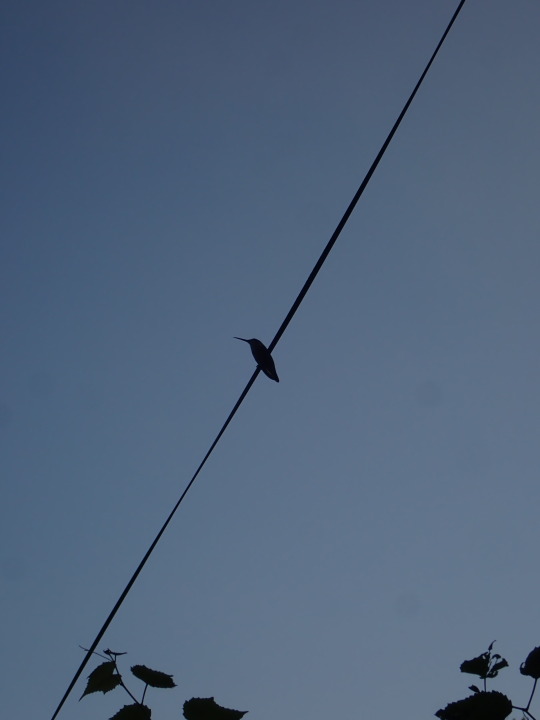
#seen while walking#storm clouds#power lines#pizza#consumerism at its finest#fungus#crow#garden#backyard garden#flowers#carpenter bee#blue salvia#homegrown vegetables#purplehull peas#pole beans#zinnias#butterfly#mint#jumping spider#community garden#shelby county community garden#plot 420#verbena#dahlia#sunflower seeds#seed saving#lemon squash#crookneck squash#eggplants#sweet millions
3 notes
·
View notes
Text
How do birds migrate across continents with such precision?
Introduction: How do birds migrate across continents with such precision?
In the expansive canvas of the natural world, few phenomena rival the annual migration of birds across continents. It is a spectacle that encapsulates the essence of precision and navigational prowess. From the soaring Arctic Terns charting pole-to-pole courses to the delicate navigation of Ruby-throated Hummingbirds, the…
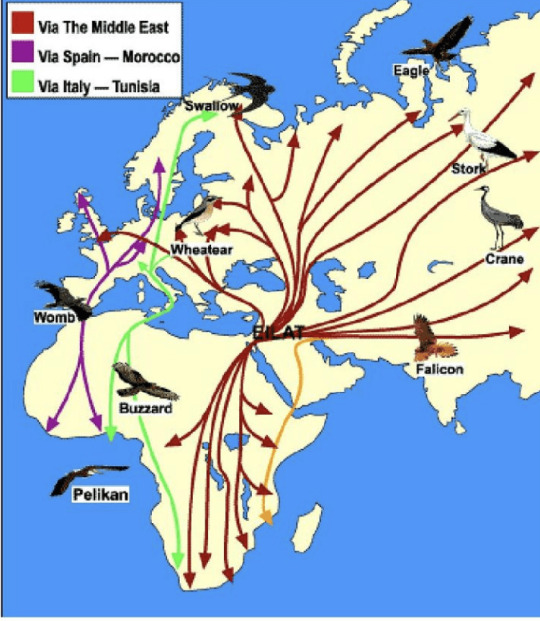
View On WordPress
0 notes
Text
What is yellow belly sap? 😆

This is a Yellow-bellied Sap Sucker (Sphyrapicus varius).
"The sapwells made by Yellow-bellied Sapsuckers attract hummingbirds, which also feed off the sap flowing from the tree. In some parts of Canada, Ruby-throated Hummingbirds rely so much on sapwells that they time their spring migration with the arrival of sapsuckers. Other birds as well as bats and porcupines also visit sapsucker sapwells." - allaboutybirds.org
#photo#photography#photographer#photographylovers#bird#birdwatching#birdphotography#birds#birdsphotography#birds of north america#birdlovers#birdingphotography#birds nature#yellow bellied sapsucker#backyard birds#bird watching#bird photography#birding
11 notes
·
View notes
Text
7/12
After rain in the morning
yesterday turned out to be
a pretty much perfect July
day. Our neighborhood fox
came through our yard…still
rangy and mangy…but a fox,
which is special. And then, out
for a photoprowl on my trike,
I found a Ruby-throated
Hummingbird resting on the
top stand of the wire fence
along the back side of the dunes
at the beach…a young bird,
probably already headed south
on its first migration. And
a family of Cedar Waxwings
perched in a tree right over
me out along the bridle trail,
and I caught a Spot-winged
Glider sitting for a photo.
And that’s not counting
the Snowy Egret catching
fish in the marsh or the
Glider I photographed on
the wing behind the dunes.
So, yes, pretty much more
than I had hoped for on
a July day in southern Maine
after 2 days of rain.
0 notes